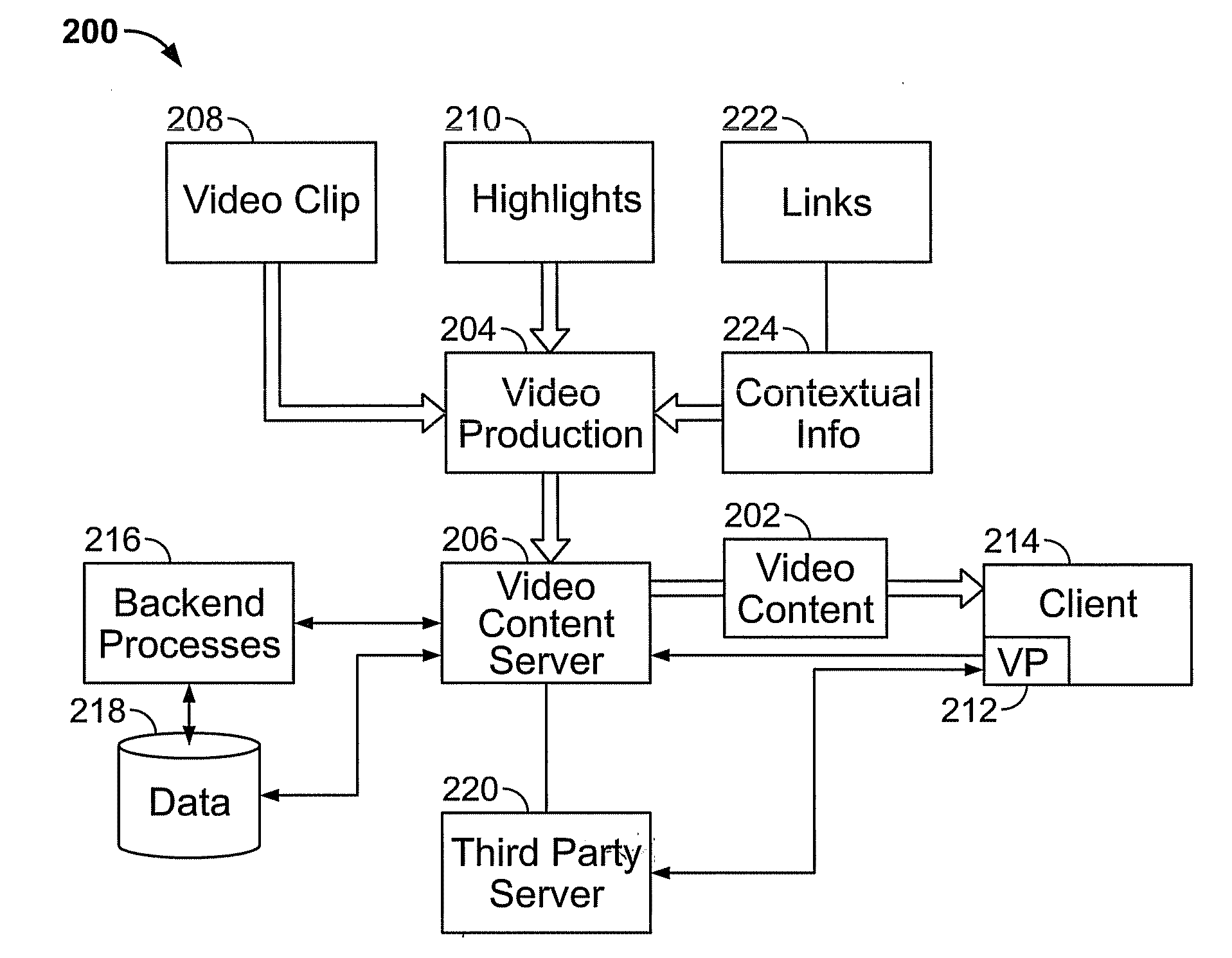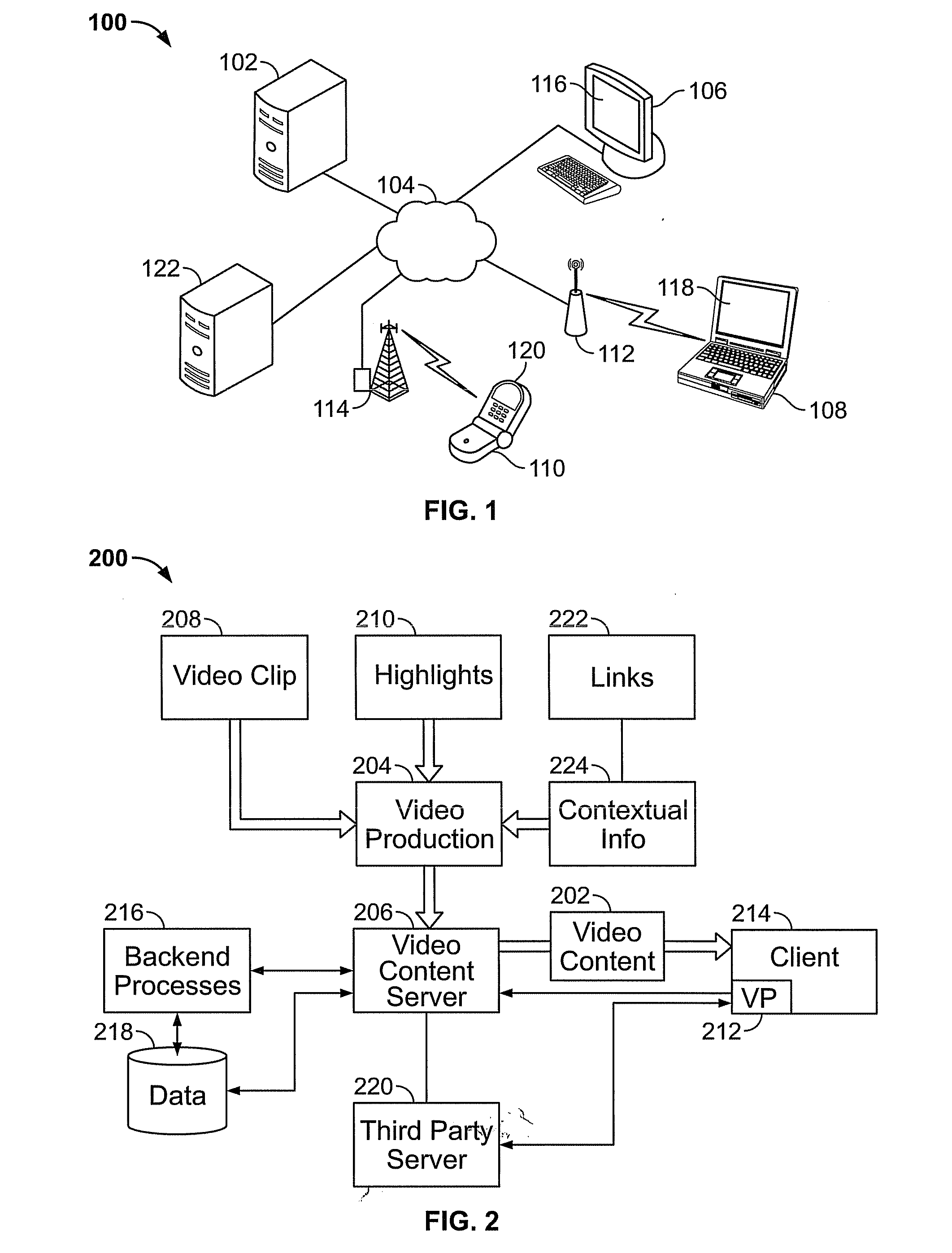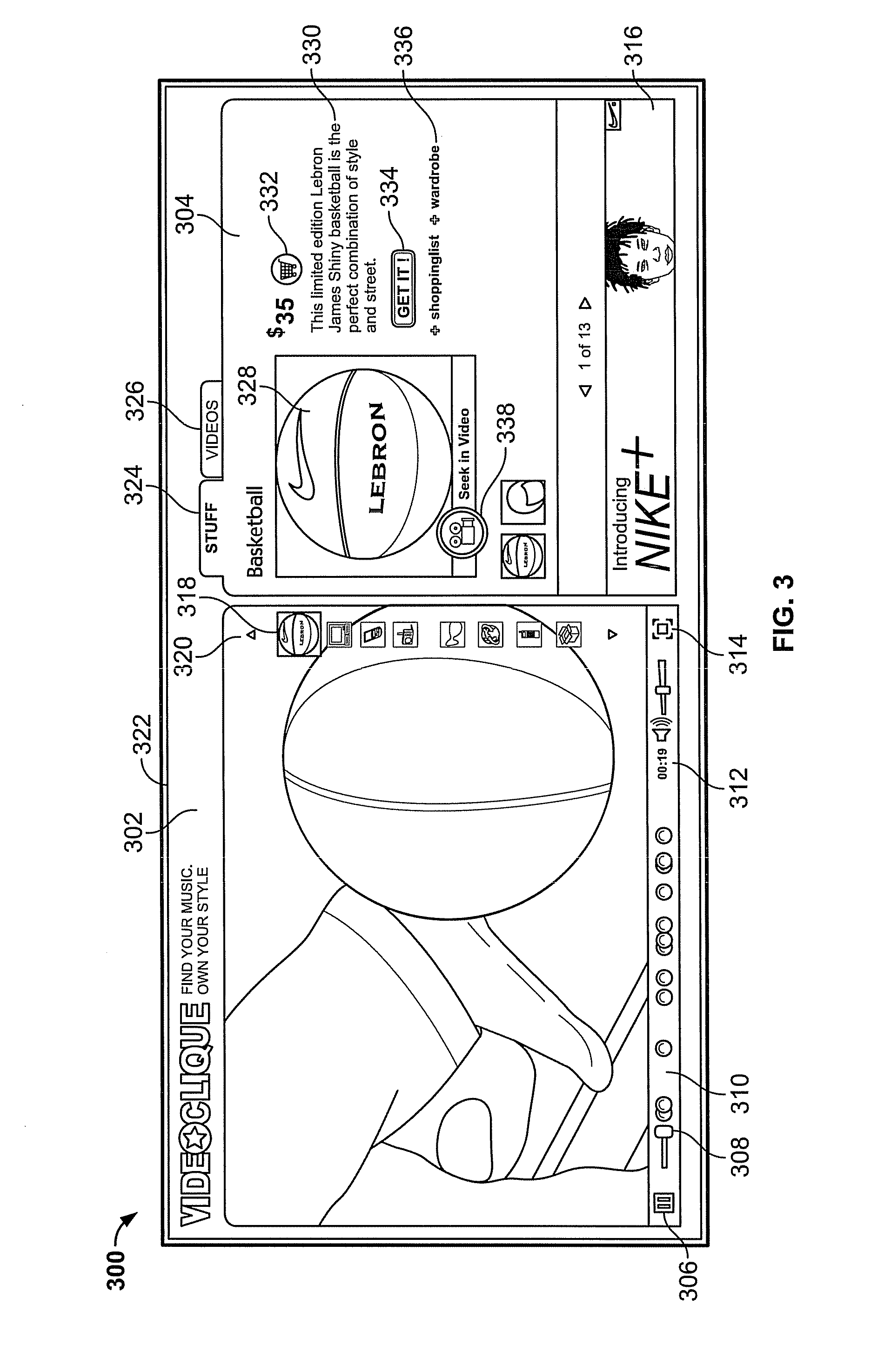Broadband video with synchronized highlight signals
a highlight signal and broadband video technology, applied in selective content distribution, television systems, instruments, etc., can solve the problems of not being able to make new or innovative use of capabilities offered by online video distribution in an interactive computing environment, not being able to distinguish or more compelling on the advertising platform, and not being able to realize a profit from offering online video content. achieve the effect of high degree of synchronization and easy identification
- Summary
- Abstract
- Description
- Claims
- Application Information
AI Technical Summary
Benefits of technology
Problems solved by technology
Method used
Image
Examples
Embodiment Construction
[0027]FIG. 1 shows a system 100 for distributing and using broadband video with synchronized highlight signals. A video server 102 may store and serve video content via a connection to a wide area network 104 such as the Internet, using any suitable protocol such as, for example, TCP / IP through a World Wide Web interface. The server 102 may service requests for content from any number of remote clients, for example, requests from a client computer 106 via an Ethernet connection to an Internet host, from a portable computer 108 via a wireless access point 112, or from a mobile phone / computing device via a wireless cellular network 114. Any suitable client may connect to server 102; a suitable client is one capable of running a video player application to play the requested video content and produce video output on a display screen. For example, client devices 106, 108, 110 are equipped with internal processors capable of running a video player application for requested video content ...
PUM
 Login to View More
Login to View More Abstract
Description
Claims
Application Information
 Login to View More
Login to View More - R&D
- Intellectual Property
- Life Sciences
- Materials
- Tech Scout
- Unparalleled Data Quality
- Higher Quality Content
- 60% Fewer Hallucinations
Browse by: Latest US Patents, China's latest patents, Technical Efficacy Thesaurus, Application Domain, Technology Topic, Popular Technical Reports.
© 2025 PatSnap. All rights reserved.Legal|Privacy policy|Modern Slavery Act Transparency Statement|Sitemap|About US| Contact US: help@patsnap.com



